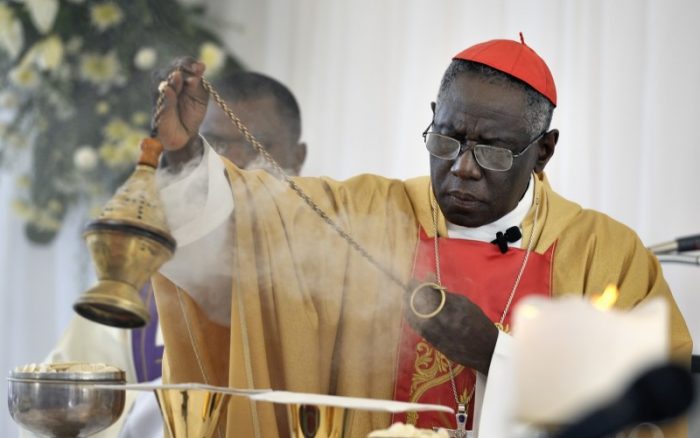Jeg holder nå på å sette opp tekstene til katolske messer ved hjelp av Bibelselskapets nye oversettelse, Bibel 2011, og torsdag sist uke så evangeliet slik ut:
☩ Lesning fra det hellige Evangelium etter Lukas (7,24-30)
Da sendebudene fra Johannes var gått, begynte Jesus å tale til folket om Johannes: «Hva gikk dere ut i ødemarken for å se? Et siv som svaier i vinden? Nei! Hva gikk dere ut for å se? En mann kledd i fine klær? De som går i praktfulle klær og lever i luksus, bor i slott. Hva gikk dere da ut for å se? En profet? Ja, jeg sier dere: mer enn en profet! Det er om ham det står skrevet:
Se, jeg sender min budbærer foran deg, han skal rydde veien for deg.
Jeg sier dere: Blant dem som er født av kvinner, er ingen større enn Johannes. Men den minste i Guds rike er større enn han.
Hele folket, også tollerne, lyttet og ga Gud rett; de lot seg døpe med Johannes-dåpen. Men fariseerne og de lovkyndige viste Guds plan fra seg; de lot seg ikke døpe av ham.
Slik lyder Herrens ord.
John Allen skriver om denne teksten, hvordan en prest klarte å holde en svært kort, men svært innholdsfull preken om dette budskapet fra Jesus om Johannes døperen, og hans oppgave. Slik skriver Allen i dag:
Thursday’s Gospel was drawn from Luke 7, in which Jesus speaks of John the Baptist, the key line from which is the following: “Among those born of women, no one is greater than John; yet the least in the Kingdom of God is greater than he.”
In all, the Gospel reading that morning ran to 171 words, featuring the typically crisp language for which the public utterances of Christ are justifiably renowned.
After the Gospel, Dennison paused to deliver his homily. There were the usual signs of people settling in, getting comfortable, perhaps trying to sneak in a quick check of messages or a peek at the bulletin, that usually precede an experience people expect will stretch on for a least a few minutes.
Here’s Dennison’s entire homily, word-for-word, which was immediately burned into my memory.
“To be entirely clear, Jesus said that among those born of women, John was the greatest. To be equally clear, we should listen to him and respond.”
Frankly, the brevity was so stunning my colleagues and I did a double-take, unable to process at first that Dennison was actually finished and was moving to the altar to begin the liturgy of the Eucharist.
The next day, the reading was from John 5 about how John the Baptist brought a lamp to light the way to Christ, a robust 85 words in total. Once again Dennison summarized the reading, and then added this: “John brought light, but there are those who still refuse to see.” Twelve words, start to finish.
After I heard him do it so succinctly again, I said: “He’s my new candidate for the greatest homilist I’ve ever heard!”
To some extent, I was being facetious – breakfast and a day in Key West awaited, and two 10-second homilies in a row were an unexpected bonus. Plus, this was daily Mass in front of a small congregation.
On the other hand, I wasn’t entirely kidding. If you look at Dennison’s utterances, the heart of the matter in each case was all there. As one of my colleagues put it, it was the “kerygma” itself, entirely unadorned.
As anyone who’s sat through a random sample of Catholic homilies recently could confirm, that’s often not the typical experience. Too often, it’s hard to detect the evangelical forest for the verbal trees.
On Friday, I went up to compliment Dennison on his economy of expression. He told me it’s deliberate, something he’s been doing at daily Mass for years, ever since he arrived in Key West.
“Anybody can talk for five minutes and maybe have a vague idea of their opening point,” he said. “To do it all in one sentence, you really have to think about it.”
 I dag – på Wisløffs fødselsdag – leste jeg ferdig Egil Sjaastads helt ferske og interessante biografi om Carl Fredrik Wisløff, en mann jeg kjente godt til og beundret i ungdommen, jeg var til og med til stede på hans avskjedsforellesning på MF i desember 1975.
I dag – på Wisløffs fødselsdag – leste jeg ferdig Egil Sjaastads helt ferske og interessante biografi om Carl Fredrik Wisløff, en mann jeg kjente godt til og beundret i ungdommen, jeg var til og med til stede på hans avskjedsforellesning på MF i desember 1975.









